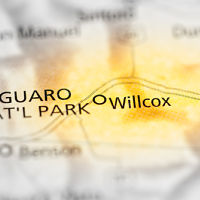| |
NORTHERN COCHISE COMMUNITY HOSPITAL
HOSPITAL LOCK-DOWN PROCEDURES
DEPARTMENT: Safety
SUBJECT: Hospital Lock-Down Procedures
Reviewed By:
| Review Date:
| Committee
| 11/17/17
| Med Staff
| 11/28/17
| Governing Board
| 11/28/17
|
REFERENCES:
SCOPE/RESPONSIBILITY: Scope will include the Main Hospital campus lock-down processes and it is the responsibility of all NCCH leadership, managers, and staff to be familiar with the reasons and processes that may cause a lock-down situation.
POLICY/PROCEDURE: Lock-down may be required under various conditions for the safety of staf, patients and visitors, as well as protecting the integrity of the facilities environment. Two examples would be that of an active shooter/attacker situation or a community hazmat situation.
PROCEDURE:
Types of lock-downs:
1. Internal Lock-Down:
- Internal lock-downs are used when there is an internal threat to staff, patients, and visitors present, such as an active shooter/attacker incident.
- Overhead paging and the emergency communications system will be used to provide warning to all staff.
- Staff will be instructed to secure their departments and areas to the best of their ability, and shelter from threat situations. This type of lock-down is expedient, and is not perfect, it is intended to preserve lives in immediate risk.
- Also refer to NCCH Active Shooter Policy and Procedure and the ALICE process.
2. External Lock-Down:
External lock-down process is a more deliberate planned action, when compared to the Internal Lock-Down situation. The External Lock-Down is used when NCCH needs to control all traffic entering the facility. Most likely scenario this type of lock-down would be used for is in response to a HAZMAT containment incident in the community/region. During a HAZMAT incident, it will be critical for NCCH to control entry and screen all patients seeking entry to the hospital. Entry to the hospital will be through a designated Decontamination/Triage point - usually the ER entrance. This control is to ensure that a contaminated person(s) does not enter the facility and contaminate the facility. At this point we would be considered contaminated and no longer able to provide services to the community, and can impact our abilities for a protracted length of time.
External Lock-Down Procedures:
The Incident Management Team/NCCH leadership will appoint a Security Branch Director, (HICS), who will ensure that all doors are secured from entry.
Available "Labor Pool" staff will be summoned to designated staging zones, and assigned doors security assignments. NCCH has two security point designations, as follows:
Door Control Points:
1 - Front Lobby
2 - ER Entry
3 - East Wing Lab
4 - East Wing HIM
5 - Specialty Clinics
6 - Therapy x2
7 - Courtyard Entry - East Wing
8 - Courtyard Entry - Business Office
Security Control Points:
1. Business Office area (Rear doors, West-side Finance, West-side Hallway, North-side Business & Purchasing access doors).
2. Service Delivery Area (Behind kitchen, laundry...).
Doors control points will need to be staffed by personnel to prevent entry into the facilities by unauthorized persons. Security control points will be staffed by personnel to monitor the business office and delivery space and any unauthorized entry attempts. All doors will be mechanically locked and remain locked during the incident.
Human Traffic Flow:
Patients, any potential patients seeking entry to hospital will be directed to the Access Screening Point, primary location is outside the Main Lobby entrance. Here it will be determined if decontamination is needed, in which will be directed to Decontamination Entry Point at ER Entrance.
- This may include "worried well" patients who may have been contaminated or not, we will send them through the decontamination process to eliminate any doubt.
- Patients presenting for other reasons or emergencies unrelated to HAZMAT contamination, (i.e.:chest pains, shortness of breath, etc.), will be triaged and may be admitted through the access screening point through the lobby into the ER.
Traffic Control:
It may be needed to have local Law Enforcement support to block roadways around the hospital to restrict vehicle traffic flow entry on to NCCH grounds. Such needed actions may arise from a Mass Casualty Incident where a lot of ingress/egress of emergency vehicles is anticipated. In a HAZMAT incident, any patients who "self transport" themselves, these vehicles will need to be quarantined and marked off with yellow tape, until they can be decontaminated at the owner's expense. We don't want to have a haphazard mess of contaminated cars spread randomly throughout our parking lots.
Demobilization:
When the incident commander provides an "All Clear" for the incident, door control points and security control points can return to normal operations. All staff will report to the staging area to turn in any equipment (radios, etc.)and to be released back to their departments or home.
SAFE-POL-006
|
|


